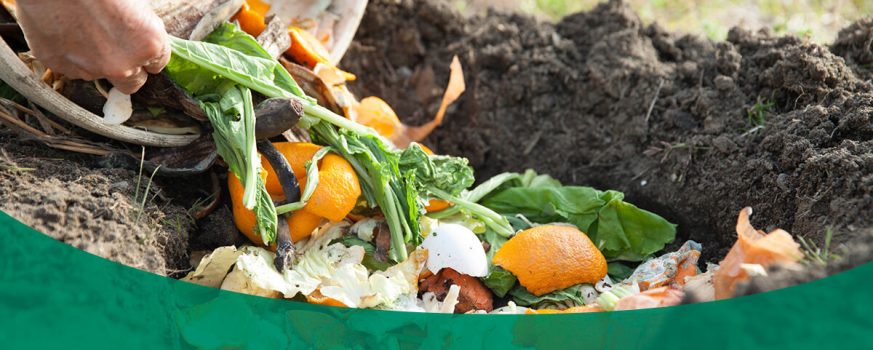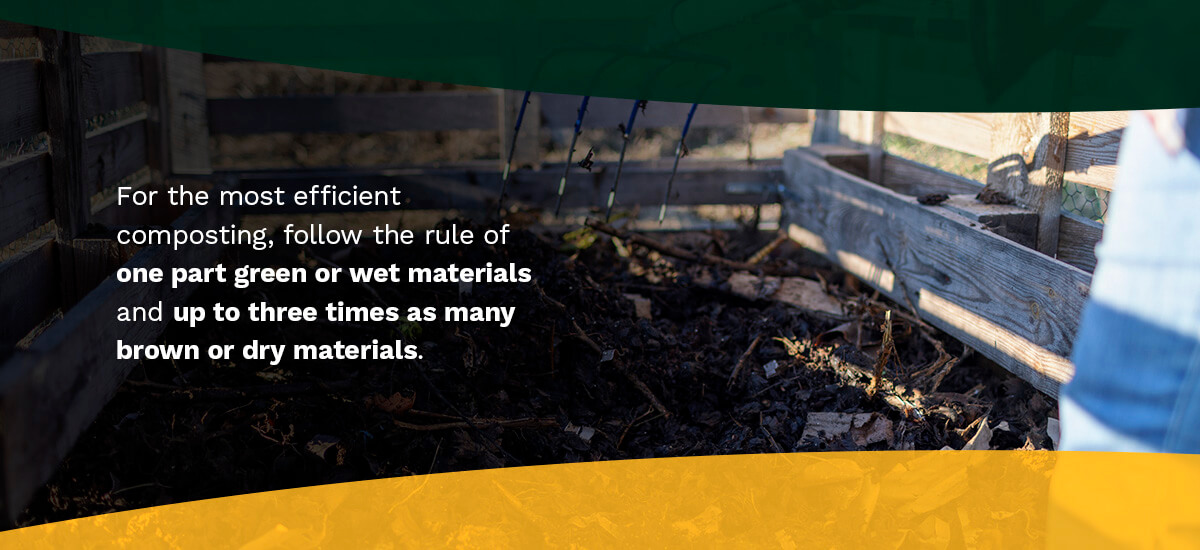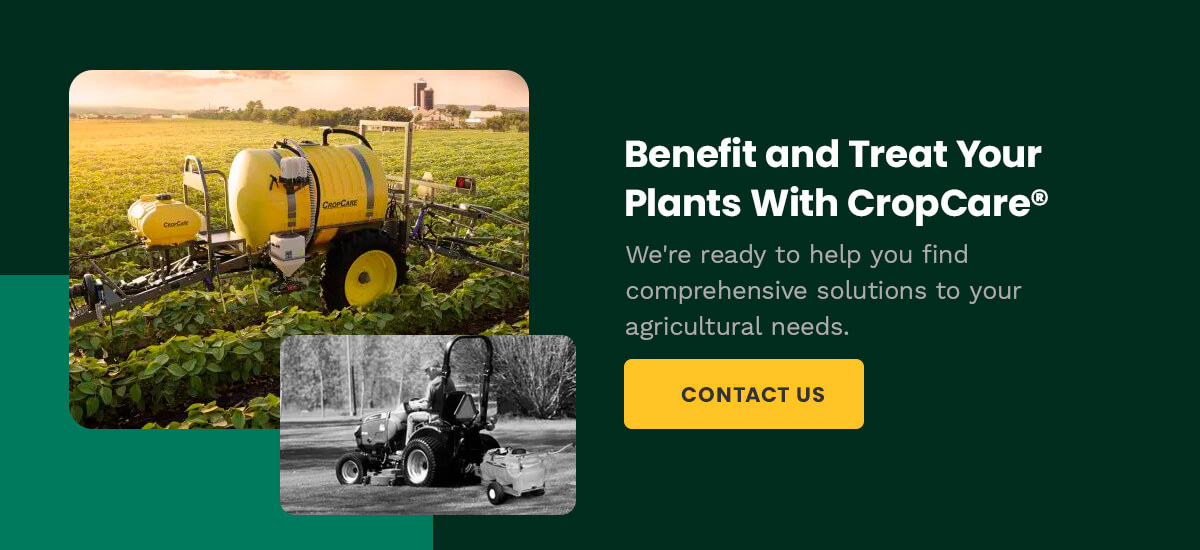
Many kitchen waste items can become compost. Rather than sending them to the landfill, you can use these materials to benefit your plants. Composting is easier than it may seem, and you can reap the benefits of these materials without taking up much space. Compost can improve your soil’s water-holding abilities and texture. Whether you have a rambling garden or a small plant plot, you and your plants will love compost.
Learn how to compost at home and what items to include or avoid in this guide.
What Can You Compost?
Your composter will determine what you can compost. Generally, all compostable materials are nitrogen or carbon-based, and a healthy compost pile will maintain a balance between the two elements. Carbon-rich items include dried leaves, wood ash, straw, peat moss, coffee grounds, corn stalks, egg shells, corn stalks, sawdust pellets, peels, bark dust and conifer needles. These materials create the light, fluffy body of compost. Nitrogen materials are rich in protein. Nitrogen-based materials include green leaves, food scraps, manure, kitchen waste and green lawn clippings.
Typically, you’ll want to have more carbon-based materials than nitrogen-based ones. You can often rely on having two-thirds brown materials and one-third green materials for your compost. Brown materials are bulkier, allowing oxygen to nourish the organisms residing inside. Having too many nitrogen-based materials can make a dense compost with smelly odors. You should cover nitrogen-rich materials with carbon-based materials to create a better smell.
Items You Should Not Compost
There are a few items you should not use for composting. For instance, fish scraps, meat and bones can attract pests, so you should only use these materials if you have a composter with a specific design to allow for this purpose. Refrain from using diseased plants or perennial weeds in your compost because you could accidentally spread diseases to your other plants.
Avoid pet manure as compost if you’re applying compost to food products. Additionally, orange rinds, peach peels and banana peels can contain pesticides or residues that can impact other plants, so refrain from these materials as well.
Other materials to avoid composting include:
- Plastic
- Plastic-coated products
- Styrofoam
- Bioplastics
- Dairy
- Cooked foods
- Large amounts of oil (small oil doses such as food grease spots on cardboard are acceptable)
- Liquids
- Materials with chemical treatments
You can add sawdust to compost, but you must be sure to avoid clumping. When using this material, spread or scatter it very thinly. The sawdust must be clean and free of chain oil or machine oil residues from any cutting equipment.
How to Compost for Plants
Composting can be easy, and over time, you will discover what works best for you and your plants. There are several tips to keep in mind when you begin composting, and you can use them to find the best strategy for your crops. Check out these tips for how to compost for plants:
Prepare a Spot on Bare Ground
You don’t need a container for your compost, though you can use one if you want. You can prepare a spot on the bare ground behind a shed or garage for a discreet way to keep your materials. Keep the pile at a reasonable height, width and depth. Around 4 feet for each dimension should be enough space to retain heat and break materials down while being manageable.
Lay Straw or Twigs Before Other Materials
Twigs and straws can trap air inside your compost pile. This lets water drain and can reduce odors. Additionally, adding a layer of these materials can help you create compost faster than other methods. This bottom layer should be a few inches deep.
Chop Materials Into Fine Pieces
Small material pieces break down faster than large ones. You can benefit your pile by taking a few minutes to chop materials into manageable pieces before adding them to the pile. For instance, grind leaves rather than adding them as a whole piece.
Layer Dry and Wet Compost Materials
The best way to build your compost pile is by layering dry and wet materials. For the most efficient composting, follow the rule of one part green or wet materials and up to three times as many brown or dry materials. This will help your pile break down at the fastest rate, but alternating your ratio can still create a good pile.
Check the Pile Temperature
As microorganisms feed on waste, the compost pile heats up. Ideally, your pile should be between 110 and 145 degrees Fahrenheit, and you’ll need to turn the pile if it is above 160 degrees Fahrenheit. The ideal temperature will kill any diseases that may have snuck into the pile. Temperatures that are too high can kill feeding microbes, which can slow the process. You’ll need a thermometer to monitor the pile’s temperature and plan to turn it if the temperature drops or reaches above the ideal temperature range.
Add Manure to the Pile
Nitrogen can help your pile maintain the best temperature range. One of the best sources of nitrogen is manure. Green manure, such as wheatgrass, clover, grass clippings and buckwheat, are excellent options. Adding these materials can activate your pile and speed up the composting process.
Cover Your Pile to Retain Moisture
Carpet scraps, plastic sheeting and wood can serve as an adequate cover for your pile. These materials will help you keep heat and moisture within the compost pile, both of which are essential to the process. Using a cover can also ensure your pile doesn’t receive excess water from rain. You want your pile to be moist without being soaked. However, you will need to add water if your pile is becoming too dry.
Turn Your Compost Pile Every Once in a While
You will need to introduce oxygen to help the decomposition process. It can take significantly longer for your pile to break down without turning it. You should use a shovel or pitchfork to complete this process. You can skip this step if you have a course supply of materials like straws. After establishing your compost pile, you can mix new materials rather than layering them. As you mix or turn the pile, you’ll incorporate the new materials and introduce oxygen, helping the entire pile to break down faster.
Benefit and Treat Your Plants With CropCare®
CropCare® shapes innovative solutions that benefit you. We manufacture specialty vegetable equipment and agricultural sprayers with unique designs to fulfill your expectations for an excellent crop yield. We offer built-to-order models with customizations and configurations to meet your specifications. We’re ready to help you find comprehensive solutions to your agricultural needs. With us, you can find technical support, free quotes and quality parts and equipment. Contact our team to learn more about what we can do for you.



